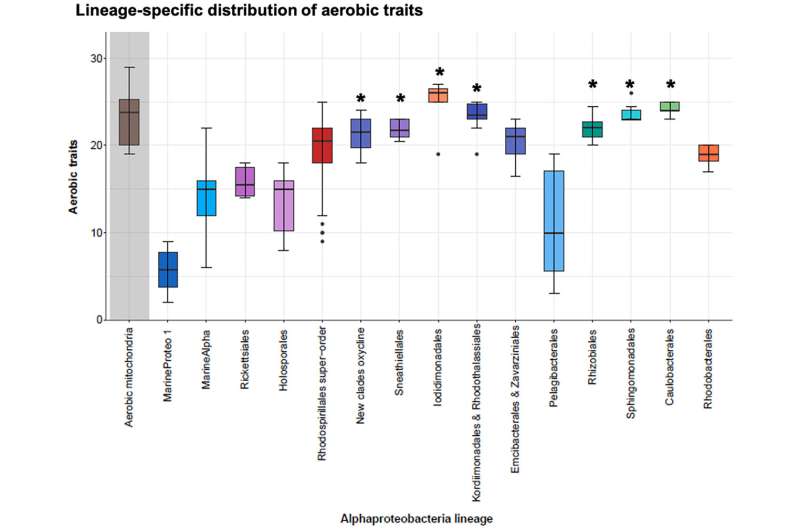August 10, 2023 report
This article has been reviewed according to Science X's editorial process and policies. Editors have highlighted the following attributes while ensuring the content's credibility:
fact-checked
peer-reviewed publication
trusted source
proofread
Bacteria found in hot springs may be closest to mitochondria precursor

A group of genomic researchers at the Center for Genomic Sciences, in Mexico, working with a colleague from the Institute of Biotechnology, also in Mexico, has found a type of bacteria that might be the closest modern relative of the mitochondria precursor.
In their study, reported in the journal Science Advances, Otto Geiger, Alejandro Sanchez-Flores, Jonathan Padilla-Gomez and Mauro Degli Esposti surveyed thousands of bacterial genomes, looking for those that most closely matched what are believed to be attributes of the genome of the mitochondria precursor.
Parth Raval, William Martin and Sven Gould with Heinrich Heine University have published a Focus piece in the same journal issue describing prior research into the search for the mitochondria precursor and summarize the work done by the team on this new effort.
Scientists believe that life first appeared on Earth approximately 3.7 billion years ago. They also believe that evolution of a type of bacteria led to a precursor of mitochondria approximately 1 billion years ago, spurring the evolution of all forms of modern life. But, as Raval, Martin and Gould point out, because they left no evidence of their existence behind, scientists must use other tools to approximate the genome of those early bacteria that took up residence in the cells of other marine life.
In this new study, the researchers sought to find out which bacteria today most closely resemble mitochondria precursor bacteria. To that end, they studied the genomes of all known modern alphaproteobacteria, looking for likely traits of mitochondria precursor bacteria.
In their work, the research team noted that there are two compounds produced by all mitochondria, both of them lipids. Such lipids, they further note, are found in just a few types of modern bacteria. That helped to narrow the search. Eventually, the team landed on types of marine bacteria that are commonly found in hot springs around the world.
The researchers suggest they are good candidates to represent modern relatives of the ancient mitochondria precursor bacteria. One factor that ties them all together, they note, is the high oxygen gradient in such places, which the types of bacteria that live there need to survive.
More information: Otto Geiger et al, Multiple approaches of cellular metabolism define the bacterial ancestry of mitochondria, Science Advances (2023). DOI: 10.1126/sciadv.adh0066
Parth K. Raval et al, Mitochondrial evolution: Gene shuffling, endosymbiosis, and signaling, Science Advances (2023). DOI: 10.1126/sciadv.adj4493
Journal information: Science Advances
© 2023 Science X Network





















